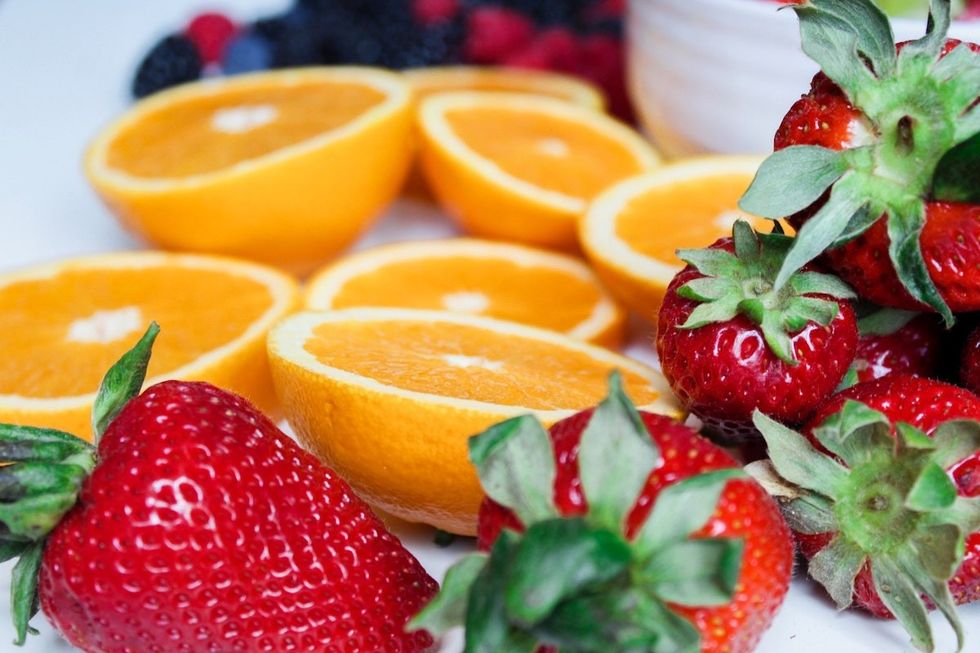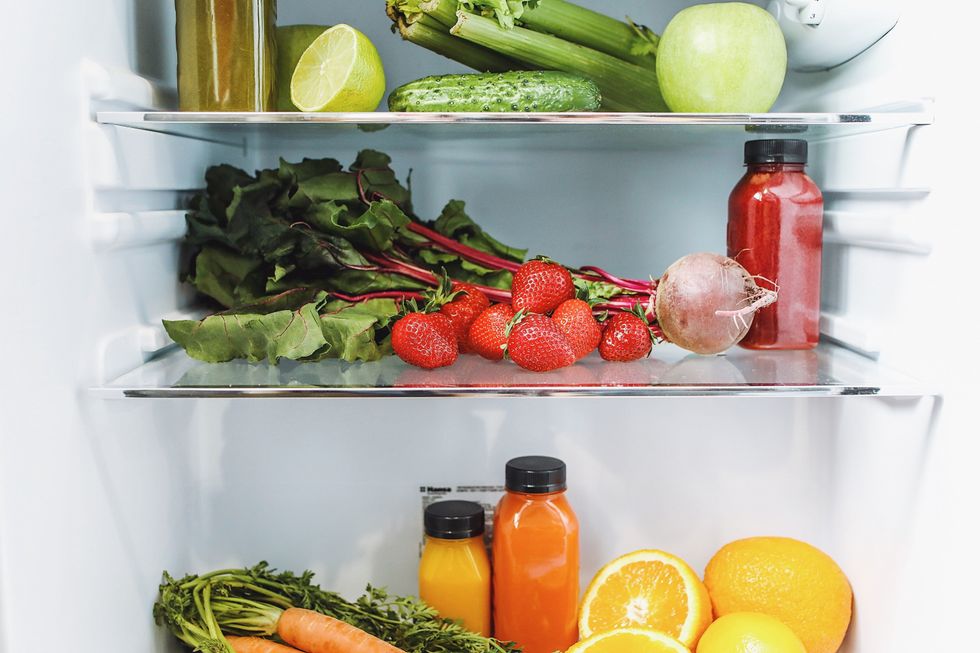
My container of Trader Joe’s strawberries turning rotten just days after I bought them is something that happens way too often, but the internet is finally giving me a solution. My For You Page has been feeding me top-tier produce washing content for the last few weeks (colanders and salad spinners galore), and though I’m thankful for the berry-friendly advice, I feel guilty for not paying attention to my groceries’ needs sooner.
Turns out, the produce we pick from the store can be…yucky. According to EWG, strawberries, spinach, kale, peaches, pears, nectarines, apples, grapes, bell and hot peppers, cherries, blueberries, and green beans are on 2023’s “dirty dozen” list – crops with the highest levels of pesticides and contaminants. Some items had as many as 23 different pesticides, which really doesn’t make me feel better, and likely throws you off, too.
Pesticides found in produce mess with your body’s hormones, potentially affecting fertility, nervous system function, and BMI. Though organic produce bans the use of synthetic pesticides, it can sometimes be the pricier option in an already expensive economy. If you're always looking to save at the store like me, you buy the regular-shmegular berries. The good news is we can take those regular-shmegular berries and make them safer to eat, longer lasting, and better tasting — all by properly washing them. In addition to simply tasting better, produce that lasts longer will cut down on your grocery bill, too. Here’s what you need to know to do exactly that.
1. Organic produce needs to be washed, too.

It’s normal for small bugs (like aphids) to hang out in the produce you buy from the store – even in organic varieties. After all, fruits and veggies do come from the outdoors. But thinking about tiny living things in them can be unsettling. Not only does washing your produce the right way eliminate harmful pesticides, it rinses away the dirt and little bugs you’d rather avoid ingesting – so it’s safer to wash everything.
2. Give your produce a lil' bath.
Across the board, this is how you should be washing your produce:
- Grab a large bowl to soak your produce in. Fill most of it up with cold water.
- Next, add 1-2 cups of any type of vinegar and around 2 tablespoons of baking soda to the bowl.
- Slightly agitate the mixture, making sure everything is submerged.
- Let your produce soak in the bath for 10-15 minutes.
- Transfer the produce to a colander and rinse thoroughly under cold water.
3. Fully dry off your clean produce.
Removing moisture from your freshly washed produce prevents mold and rot from growing. Drying them with paper towels and/or a salad spinner will do just fine!
4. Store your produce properly.

The right storage solution can stretch the shelf life of your washed produce from days to weeks. As far as storage goes, opt for an airtight container. Whether it’s tupperware or mason jars, a sealed vessel keeps produce fresher for longer.
5. Aim for the "clean fifteen."
EWG has also identified crops with the least amount of pesticides: avocados, sweet corn, pineapple, onion, papaya, sweet peas, asparagus, honeydew melon, kiwi, cabbage, mushrooms, mangoes, sweet potatoes, watermelon, and carrots. Knowing produce on the “dirty dozen” list can impact your health, it’s better to shop the “clean fifteen” – and better yet, organic.
Do you have any tips for how to wash produce? Let us know on Twitter and sign up for our email newsletter for more kitchen tips delivered straight to your inbox!
Header photo by Vanessa Loring / PEXELS
0 Commentaires